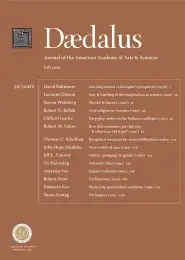Cultural China: the periphery as the center (1991)
The inscription of the Tang’s basin reads, “If one day you truly renew yourself, day after day you will renew yourself; indeed, renew yourself every day.” In the “Announcement to the Prince of Kang” it is said, “You shall give rise to a renewed people.” In the Book of Poetry it is said, “Though Zhou is an old state, the Mandate it holds is new.” For this purpose, the profound person exerts himself to the utmost in everything.
–The Great Learning1
China, one of the longest continuous civilizations in human history, “may be visualized as a majestic flowing stream.”2 Chinese culture, the generic term symbolizing the vicissitudes of the material and spiritual accomplishments of the Chinese people, has undergone major interpretive phases in recent decades and is now entering a new era of critical self-reflection. The meaning of being Chinese is intertwined with China as a geopolitical concept and Chinese culture as a living reality.
For China, Chinese people, and Chinese culture, the image of the twentieth century as an atrocious collective experience of destructiveness and violence emerges with fulgent salience as we approach the fin de siècle rumination. Stability has often meant a delicate balance for a few years; even a decade of peaceful coexistence evokes memories of permanence. The fluctuating Chinese political landscape, precipitated by external events unprecedented in Chinese history since the mid-nineteenth century, has become so restless in the last decades that not only the players but the rules of the game have constantly changed. For instance, in the eight decades since the end of the Qing dynasty in 1911, a succession of different versions of the state constitution were drafted and promulgated in both the Republic of China and the People’s Republic of China. Not revisions or amendments, each new version superseded the previous one.3 Indeed, virtually no institution of significance (university, church, press, professional society, or civic organization) has lasted for more than a generation. The two major parties (the Nationalist and the Communist) seem to have endured in form, but they both have been so substantially and radically restructured that a sense of cynicism and uncertainty prevails among their members. The most devastating rupture, however, occurred within the intellectual community.
. . .
